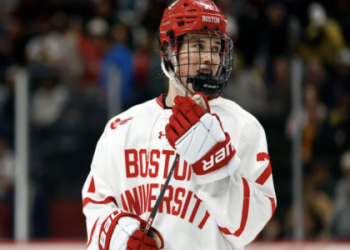In the world of D3 hockey, recruiting the right players can be the difference between a championship season and a year of rebuilding. With a keen eye for talent, coaches and scouts must navigate through the complexities of player performances, on-ice behaviors, and team dynamics to find the best recruits for their programs. Recently, several standout players showcased their skills in regional tournaments, making headlines for their exceptional abilities. These events not only highlight individual talent but also provide valuable insights into the recruitment process.
One standout performance came from Jason Lee, a skilled forward from New York. In the recent Mid-Atlantic Prep Hockey League finals, Lee scored two goals and registered three assists, leading his team to victory. “I just wanted to play my best and help my team succeed,” Lee commented after the game, emphasizing the importance of teamwork in hockey. Such performances make players like Lee hot commodities for D3 programs seeking to enhance their rosters.
However, finding the right players goes beyond just looking at statistics. Coaches often look for particular traits and skills that fit their team strategies. For instance, head coach Karen Smith of Elmira College has a strong preference for players who exhibit leadership qualities both on and off the ice. “Skill is important, but a player’s mentality and ability to work with others can make a huge difference in our success,” Smith explained. This highlights how subjective and multifaceted the recruitment process is.
Understanding Trends and Backgrounds
Moreover, understanding players’ history is crucial. Many of the top recruits come from competitive high school or club teams. Their performance in these environments often serves as a benchmark for potential. For instance, local player Emily Tran has shown remarkable growth since joining her club team, steadily improving her scoring average each season. “Every game was a learning experience for me,” Tran reflected, revealing her dedication to development. Such a trajectory is what D3 coaches look for: potential that can evolve with proper coaching.
Additionally, external factors like rink conditions cannot be overlooked. Some players thrive in larger rinks, whereas others prefer smaller, more confined spaces. This adaptability often informs a coach’s decision. The dynamics of home versus away games also contribute to how players react under pressure, providing pieces of information that scouting cannot always capture. Observing athletes in various settings allows coaches to gauge resilience and capability.
The Emotional Connection
It’s also essential to highlight the emotions involved in the game. Players like Ryan McCarthy express their passion for hockey, which in turn reflects in their abilities on the ice. “Hockey is everything to me. I always give my all because I want to inspire others,” McCarthy stated. Such passion can be infectious and critical when teams are considering chemistry among recruits. Coaches often seek players who not only have skills but also bring energy and positivity to the locker room.
In conclusion, finding the best D3 hockey recruits is not just about analyzing metrics or statistics. It envelops observing their on-ice performance, understanding their background, appreciating their emotional commitment to the game, and studying how they fit into a coach’s vision. The recruitment landscape is dynamic and ever-changing, reflecting broader trends in youth hockey and player development. As the season progresses, D3 programs continue to evaluate and adjust their strategies to ensure they attract the best talent available.
What traits do you think are most important for a hockey player at the D3 level? Are you a player looking to recruit or a coach searching for talent? Share your thoughts in the comments below!















